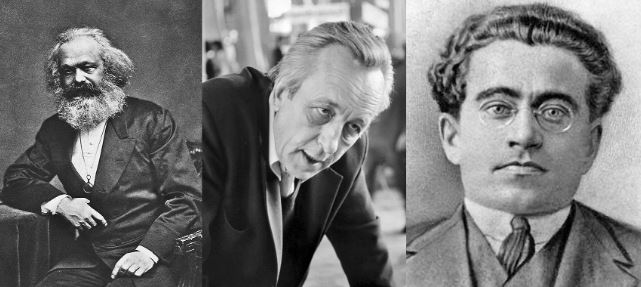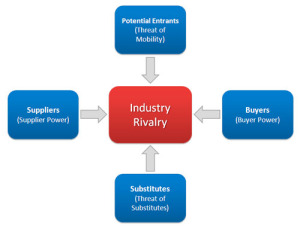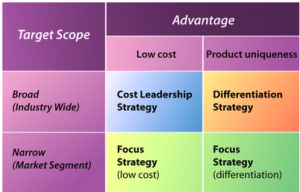Consumerism and its Effect on Culture
Consumerism is the human culture that encourages consumers to purchase and acquire products in a bid to keep the trade alive (Apecsadmin, 2016). In a society that operates by consumerism culture, there are more adverts and competitive prices that are aimed to make the consumers purchase more products and create existent demand. Currently, the resources’ consumption is alarming. “About 59% of the world’s resources are consumed by 10% of the population” (Greentumble Editorial Team, 2016). This culture comes with a range of pros and cons. It makes the community to perceive purchasing and acquisition of materials as happiness rather than satisfaction of needs. The members can easily judge their colleagues on their materials such as fashion and automotive.
As a result, there is increased unnecessary purchase by those who have which in turn increases pressure on the existing natural resources. The consumerism behavior is more rampant in the US and the United Arab Emirates. Research has shown that if everyone’s consumption scale was equivalent to that of an average American, we would require 4 planets to sustain our lifestyle (Greentumble Editorial Team, 2016). As per this research, the consumerism causes more cultural harms than benefits (Shah, 2005).
Consumerism causes destruction to the environment in the long run. The human population has insatiable cravings for resources which makes increases the pressure on the natural and man-made resources. Whether the required resources are natural or man-made, there is a direct or indirect impact on the world resources. In case of food products, they are mostly derived from farms and where they are manufactured; there is environmental degradation that results from disposal of industrial waste.
There is increased cultivation of land to satisfy the demands and in the process sustainable farming methods are not practiced since the aim of the farmers is to make profit. Farming is accompanied by expansion and land clearance which is achieved via deforestation therefor causing climate changes. Other farming practices like livestock and poultry farming has also been associated with environmental degradation which also have negative cultural effects (Shah, 2005).
Consumerism Demand
Since some plants are more demanded than others, those whose demand is high are cultivated in expense of others leading to loss of plants diversity. It also leads to cultivation of non-food crops such as sisal and flowers which are in demand and therefore hunger is the long run outcome. Another example is where these animals consume a lot of water and also cause pollution to the water sources.
Most interestingly is the finding that some of these animals are fed with more grains while some poor persons are starving in some part of the world.The poor lacks any otherwise than to believe that money brings happiness making them to be willing to do anything to acquire financial properties. There is communal disintegration and loss of unity where some animals are valued by their owners, more than fellow human beings (Shah, 2005).
The culture is also one of the leading causes of poverty. The gap between the rich and the poor is widening as time goes by. The population now perceives and judges their colleagues on their material possession which is very evident from the dressing to gadgets possession. There is this mindset that exists to those who ‘have’ that the poor can use the resources to be rich too.
However, this is not applicable as there is resources inequalities between different regions and individuals. The widening gap between the rich and poor is so wide that when the rich are disposing the leftovers some have nothing to eat. A saddening case is where some spend their cash on relatively useless products such as ice cream while others cannot afford a basic lunch. However, this is perceived to be normal particularly in the US (Shah, 2005).
Cultural effects are also a function of health issues, joblessness and rural-urban migration. Consumerism causes health problem to the poor due to malnutrition and to the rich due to over consumption. Over-consumption health issues are those related to obesity and dormant lifestyle. The rich have a tendency of eating at wish and driving right from their door-step to their different destination. As a result, they have high chances of contracting lifestyle diseases such as diabetes and heart diseases. The rate of joblessness may increase due to reduced compensation rates and increased workloads as the poor compete for these opportunities to make their ends meet.
There is also increased rural-urban migration as most people move to the urban places to try their luck. This causes labor imbalance in the rural areas where there are productive farms as most people travel to the urban area. Food shortage is the outcome and as the law of supply and demand indicates, food prices rise as a multiplier effect of consumerism (Shah, 2005). To neutralize this effect, the people have to have a means of buying and acquiring these foods for their survival.
The rich got some high purchasing powers and may displace the poor from their native land. The likely outcome is that the rich may not use the land on productive manner such as food production but instead build an expensive home causing food shortage. On the side of the minority, they will be forced to migrate to other unfavorable places such as near wildlife increasing the cases of human wildlife conflict (Shah, 2005).
Environmental degradation and cultural effects are also caused by mineral and fuel excavation. Consumerism causes increased demand on automotive and electronics. With the emergence of industrious countries such as China, there is increased excavation to meet the demand for metals. Research has indicated that the current generation has broken the past consumption. Sustainability calls for use of resources without compromising the ability of future generations to meet their needs.
It is however clear that with the current consumption rates, the future generations’ abilities to meet their future needs are compromised by the consumerism and capitalism culture. One of the fueling factors of this culture is that the developed countries are the ones advocating for sustainability and minimal use of resources. These efforts are seen as neocolonialism as these developed nations already used resources to develop their states but they want to regulate other states. Worse still is the case of European countries who amassed resources from other countries to attain their status (Shah, 2005).
Consumerism culture has also led to exporting pollution from the developed states to the developing countries. Excessive consumption has increased the pollution rates from industrial wastes. Regulations are in place to regulate pollution where the firms are required to develop more efficient ways of processing their products when their emission exceeds a certain limit. Instead of improving their systems, some firms are opting to move some of their manufacturing branches to the developing countries where there are fewer regulations and lower pollution impacts.
Due to this, the developing countries manage to maintain serene environment in the expense of poorer states in the name of foreign investment. The culture also promotes some inhumane activities such as exporting potentially dangerous materials to be recycled in the poorer states such as computer monitors. These activities are hazardous to the local community and may lead to health problems. However, these countries of origin do not care about these as they are not concerned by the needs of others (Shah, 2005).
Consumerism has also triggered social injustices revolving around poverty, land control and ownership. The ideology has increased desire for wealth which causes some sort of jealous. Individuals want to be rich while others are poor so that they can control them. They are willing to make money even via unethical means. For instance, instead of preventing a disease outbreak, some want it to occur so that they can supply medicine to the affected region and make money in their private healthcare facilities. In all these cases the developed nations’ population is to blame (Shah, 2005).
Consumerism and Purchase Power
The emergence of purchase driven economy has also presented a risk to the consumers. The marketer already know that the consumers are purchase driven and therefore they want to come up with affordable products. In the process they may compromise quality for example in the health sector. The low quality electronics may cause health problems or disasters such as fire while poor quality health services may cause drug resistant form of diseases or deaths (Logan, 2016). The ideology is also associated with moral implications. This occur where the population perceive money as the source of happiness while this is not the case always.
Money is good but may not buy sleep, good health among other valuables (Apecsadmin, 2016). Poor working environment and compensation scale may arise as company owners attempt to lower the prices of they products to attract a bigger market. “The culture undermines the social cohesion due to internalization of highly destructive values of replacing everything with money” (Logan, 2016).
The common trend with this ideology is based on human psychology and sociology studies. Human beings are insatiable in their desires and therefore it is believed that demand will exist in the presence of supply. “Consumers were acting unwisely that consumer behavior perhaps did not solve to advance their standards of living or more general goals was generally dismissed as paternalist” (Goodwin, Nelson and Ackerman, 2008).
The extreme desire of acquiring properties will cause the consumers to go against some doctrines such as that that requires people to avoid coveting in the Christianity religion. Covetousness a may encourage some criminal activities such as robbery and interfere with the existing cultures. As a result, the moral standards are eroded and decay and turmoil of families, neighborhoods and the society (Teshome, 2017).
With all the above mentioned cons of consumerism, it also has some few pros. When correctly implemented, it may cause the consumers to purchase more and this is an advantage to businesses. It may reduce the costs of living due to the drop of commodity prices in the market. The increased demand will also call for more manpower and this may leads to increased employment opportunities. For these pros to be realized, consumerism has to be managed as contrary may happen for example increase of workloads instead of employing more personnel (Apecsadmin, 2016).
In my opinion, consumerism is not a good idea as its cons exceeds its cons. It leads to perceiving money as the source of happiness. It has contributed to the widening gap between the rich and the poor. There is significant degradation of environment due to inappropriate consumption of use of resources. It has caused rural urban migration as people move to try their luck.
Researchers have clearly indicated that our consumption exceeds the historical records and should we continue in the same way, we’ll definitely compromise the ability of the future generations to meet their own need. The ideology has also increased the health issues from malnutrition and over consumption. It also causes unfair competition where the rich continues to rich while the poor continues to be poor.
The possession own money among other resources make the owners feel a kind of superiority and despises the less fortunate. The ideology causes corruption of morals as the desire for wealth exceeds and the poor attempt to look for alternative means of acquiring wealth. There is resources inequality between the developed and the developing countries. The developed countries takes advantage of their position to transfer their waste to the developing countries.
References
Apecsadmin. “6 Pros and Cons of Consumerism.” (2016). This articles has been written organization site’s admin. It covers the various pros and cons of consumerism though in brief and therefore facilitated writing of this paper.
Goodwin, Neva, et al. “Consumption and the Consumer Society.” (2008). This reference is relevant as it elaborates the relationship between consumption and the consumer society. It reveals the rationale behind different consumption patterns. The paper’s subject is also covered by this source and from the fact that it is an academic article, its information is reliable.
Logan, T. Collins. “What are the advantages and disadvantages of consumerism?” (2016). This reference is very brief but direct to the point. In this source source, you will find the pros of consumerism.
Shah, Anup. “Effects of Consumerism.” Glabal Issues (2005). This article by Shah is a scholarly article that is very wide in scope. For instance, it has been cited in most parts of this paper. It has provided solution to various dimensions of this paper.
Team, Greentumble Editorial. “The Negative Effects of Consumerism.” (2016). This reference by the Greentumble editors is very relevant. It has concentrated on the negative effects of consumerism supporting the paper’s thesis statement. Compared to the other sources, this particular source is focused to the main topic.
Teshome, Mengisteab. “Culture of Consumerism Effects and Society.” (2017). This article by the Ethiopian Government Press takes a new perspective on the subject matter. It has analyzed the effects of consumerism in the society and how it is being utilized by marketers.
Relevant Posts
Marketing Concepts Research Dissertations
Did you find any useful knowledge relating to consumerism and its effect on culture in this post? What are the key facts that grabbed your attention? Let us know in the comments. Thank you.






